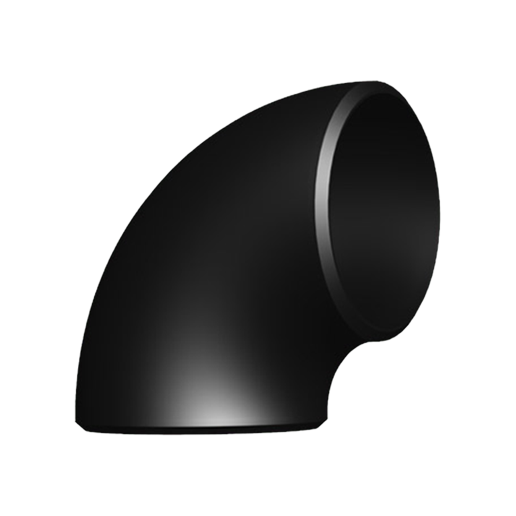Carbon steel elbow is a kind of pipe fitting used in the turning of pipelines. Commonly used are 90-degree elbow, 45-degree elbow and 180-degree elbow. Carbon steel elbows are relatively cheaper than stainless steel elbows, so they are used in a large proportion in fluid pipeline construction. Generally, different forming processes are selected for elbows of different materials or wall thicknesses. Commonly used elbow forming processes in pipe fittings factories include hot push forming, stamping forming, extrusion forming, etc. The introduction of the production process of carbon steel elbow is provided by Ningbo Ning Steel Pipe Fittings. Which one is good for carbon steel elbow processing and manufacturing? 20# carbon steel elbow, Q235B carbon steel elbow, A3 carbon steel elbow, seamless carbon steel elbow, butt welding carbon steel elbow, petrochemical carbon steel elbow, WPB A234 American standard carbon steel elbow, etc. To create the highest value for customers, we are willing to establish a close cooperative relationship with the majority of users to create a better future.

Hot push forming: The hot push elbow forming process uses a special elbow push machine, core mold and heating device, so that the billet set on the mold moves forward under the push of the push machine, and is heated and expanded during the movement. diameter and bending process. The deformation characteristic of the hot push elbow is to determine the diameter of the tube blank according to the law that the volume of the metal material remains unchanged before and after plastic deformation. The metal flow is compensated to other parts that are thinned due to diameter expansion, so as to obtain an elbow with uniform wall thickness. The hot push elbow forming process has the characteristics of beautiful appearance, uniform wall thickness and continuous operation, and is suitable for mass production, so it has become the main forming method of carbon steel and alloy steel elbows, and is also used in certain specifications of stainless steel elbows in the process of forming. The heating methods in the forming process include medium-frequency or high-frequency induction heating (the heating ring can be multi-turn or single-turn), flame heating and reverberatory furnace heating. The heating method used depends on the requirements of the formed product and the energy situation.
Stamping forming: Stamping forming elbow is the earliest forming process used in mass production of seamless elbows. It has been replaced by hot push or other forming processes in the production of elbows of common specifications, but in some specifications of elbows Due to the small production quantity, the wall thickness is too thick or too thin. It is still used when the product has special requirements. The stamping forming of the elbow adopts a tube blank with the same outer diameter as the elbow, which is directly pressed and formed in the mold by a press. Before stamping, the tube blank is placed on the lower die, the inner core and end die are put into the tube blank, the upper die moves downward to start pressing, and the elbow is formed through the constraint of the outer die and the support of the inner die. Compared with the hot push process, the appearance quality of stamping is not as good as the former; when the stamping elbow is formed, the outer arc is in a stretched state, and there is no extra metal in other parts to compensate, so the wall thickness at the outer arc is about 10% thinner . However, due to the characteristics of single-piece production and low cost, the stamping elbow process is mostly used in the manufacture of small batches and thick-walled elbows. Stamping elbows are divided into cold stamping and hot stamping. Usually, cold stamping or hot stamping is selected according to material properties and equipment capabilities. The forming process of the cold extrusion elbow is to use a special elbow forming machine to put the tube blank into the outer mold. After the upper and lower molds are closed, under the push of the push rod, the tube blank is moved The gap movement completes the forming process. The elbow manufactured by the cold extrusion process of the inner and outer molds has a beautiful appearance, uniform wall thickness, and small size deviation. Therefore, this process is often used for the forming of stainless steel elbows, especially thin-walled stainless steel elbows. The precision requirements of the inner and outer dies used in this process are high; the requirements for the wall thickness deviation of the tube blank are also relatively strict.
Middle plate welding: Use the middle plate to make half of the elbow section with a press, and then weld the two sections together. This process is generally used to make elbows above DN700.
Other forming methods: In addition to the above three commonly used forming processes, there is also a forming process in which the tube blank is extruded to the outer mold, and then passed through the tube blank to shape the ball. However, this process is relatively complicated, cumbersome to operate, and the forming quality is not as good as the aforementioned process, so it is rarely used.